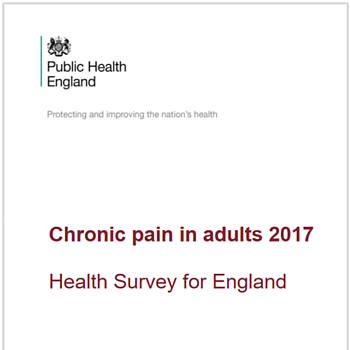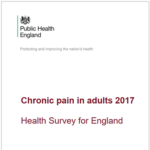 A new report from Public Health England examines data on chronic pain in England and analyses inequalities in the experience of chronic pain. The report will be useful for those commissioning and delivering services for those experiencing chronic pain and policy makers in central and local government. The findings on inequalities include that chronic pain is more prevalent in women than men; in people from the Black ethnic group than other ethnicities; and in those in more deprived areas.
A new report from Public Health England examines data on chronic pain in England and analyses inequalities in the experience of chronic pain. The report will be useful for those commissioning and delivering services for those experiencing chronic pain and policy makers in central and local government. The findings on inequalities include that chronic pain is more prevalent in women than men; in people from the Black ethnic group than other ethnicities; and in those in more deprived areas.
The Global Burden of Disease Study 2016 has highlighted pain as one of the most prominent causes of disability worldwide. Low back and neck pain have consistently been the leading causes of disability internationally, with other chronic pain conditions featuring prominently in the top 10 causes of disability. Chronic pain has a significant impact on peoples’ lives, it is associated with negative outcomes including depression, job loss, reduced quality of life, impairment of function and limiting daily activities.
The report sets out the overall prevalence of chronic pain amongst the general population as well as identifying differences between sub-groups. It examines the site and severity of the chronic pain for those who are experiencing pain, as well as the impact on their mental health. It finishes with an analysis of the use of specialist pain services.
The findings include:
- 34% of respondents reported some level of chronic pain.
- Women (38%) reported a higher prevalence of chronic pain than men (30%).
- All ethnic groups showed similar reporting of chronic pain, except for people in the Black ethnic group who reported a significantly higher prevalence at 44%.
- Those living in more deprived areas were more likely to report having chronic pain (41%) than those in the least deprived areas (30%).
- Among those who reported chronic pain, 36% also reported a long-lasting musculoskeletal condition
For those reporting chronic pain the most common long-lasting illnesses were musculoskeletal conditions. The report says the need to address inequalities in chronic pain suggests more can be done within the health system to understand why certain groups are affected more than others. This observation will allow a focus to be placed on these groups to reduce the overall burden of chronic pain.
The report also mentions that a multidisciplinary approach to chronic pain management, one which addresses all the areas related to chronic pain, would be beneficial during treatment.
Read the full report: on the gov.uk website.

